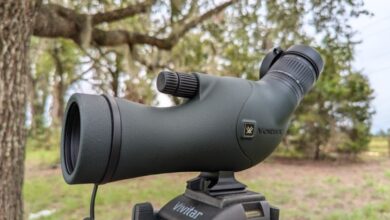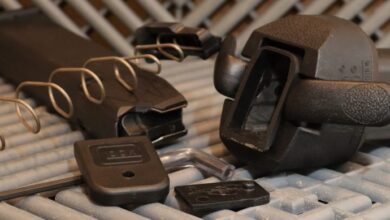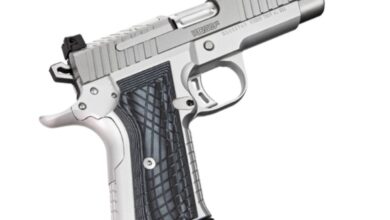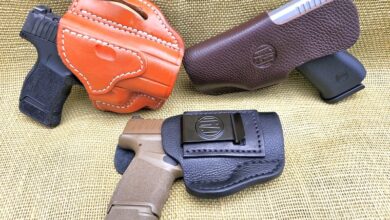Laser Sights: A History
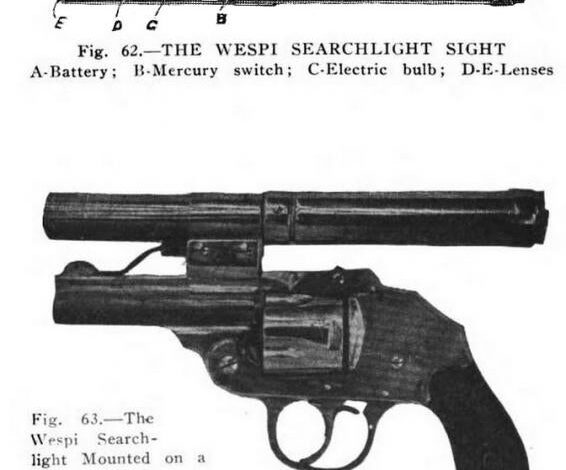
“Sharks with freakin laser beams attached to their freakin heads…” If you know, you know. Anyway, dated pop culture references aside, the idea of a laser as an aiming device is considered old hat these days. For a time, laser sights were a big deal as far as firearm aiming devices went, and, to this day, they still exist in numerous forms.
They aren’t as popular as they used to be but tend to excel on small guns. It is worth mentioning that long-gun IR lasers have gotten more popular as night vision has expanded. As a person who likes to know the why, the what, and the how, I became interested in the history of visible laser sights and decided to dive deep into their history.
The Earliest Attempts At Light-Based Sights
Long before we harnessed the power of lasers in our palms, the gun industry attempted to provide an illuminated visual aiming aid. The first I’ve found is known as the Wespi Searchlight. The Wespi dates back to 1910 or so. The Wespi mounted to the top of your weapon and provided a fairly dim light with a shadow in the center of the light beam. This little shadow acted as your aiming point.
The Wespi Searchlight wasn’t a laser by any means, but it had the same overall intention. The light only worked in dim environments and could be zeroed to a gun. How precise and useful the device was isn’t known, but it is the earliest example I can find of an illuminated aiming device.
Historically, we have seen various ad hoc options arise. The SAS reportedly used big Mag lights as low-light shooting aids in close quarters. Gas masks were also a factor they considered. These were never precision designs, but if you could get the light on the target at close range, it would be close enough to land hits. This worked well enough that HK partnered with Hensoldt to create the Aiming Projector.
This light could be mounted like an optic and activated with a pressure switch. The light could be calibrated and ‘zeroed’ for point of aim/point of impact correction. An HK claw mount allowed it to be mounted on various HK weapons.
The Modern Laser Sight
It wasn’t until 1979 that we got our first true laser sight. A company called Laser Products Corporation released something called the Model 7. The LPC Model 7 was the first modern laser sight. Modern in 1979 didn’t mean small. These days, laser sights are so small they can be built into the grip of the gun.
In 1979, the device was so large that it was mounted to the top of a Colt Trooper and ran the entire length of the barrel and even a bit beyond the frame. This tubular laser sight was so large it required a special hammer if the user wanted to cock the weapon into a single action. It covered both the stock sights entirely.

The tubular device did institute a pair of top-mounted backup sights just in case you couldn’t see the dot. To power the device, a battery pack was fit to the grip that almost doubled the grip length. A wired connection ran from the laser to the battery, and a built-in pressure pad allowed the optic to be automatically turned on when the gun was gripped. The LPC Model 7 came with its special battery charger.
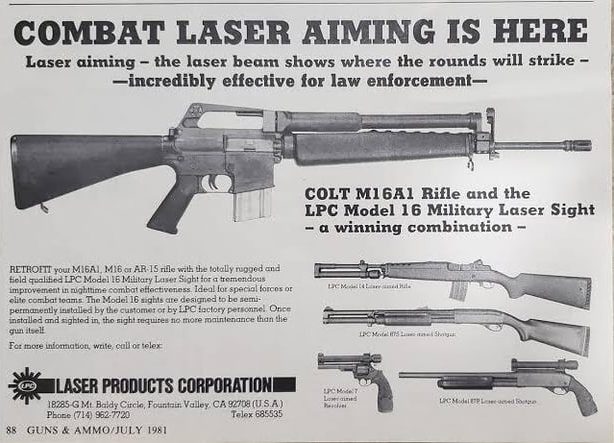
The LPC Model 7 was the first of many, and by 1984, Laser Products Corporation produced laser sights for AR-15/M16s, the Mini-14, and various shotguns. One such Remington 870 laser was adopted by the LAPD and LASD. During the 1984 Summer Olympics, Police pulling security had their guns on full display. They caught the attention of a Hollywood prop master, and what came next gave lasers a massive boost in public awareness.
A Robot, a 45, and a Laser Sight
That prop master was working on a little film called Terminator. In the film, if you haven’t seen it for some reason, a robot comes from the future to kill the mother of the unborn savior of mankind. He stops at a gun store and gets his hands on an arsenal of firearms, including an AMT Long Slide .45 ACP handgun fit with a laser sight.
It was fitted with a highly modified LPC Model 7. Ed Reynolds, one of the founders of LPC and inventor of the Model 7, built two models for the film: a dummy model and a working model. The large battery could not be installed on the AMT Longslide, so Arnold ran a wire down his sleeve to a battery pack contained in the pocket.
The film was an absolute hit and a massive cultural success. The laser you saw in the film was a real laser, a working product, albeit a somewhat hasty, thrown-together one. The film introduced the general public to a laser-aiming device, but it didn’t necessarily propel LPC to the moon sales-wise. The original devices were huge, somewhat clunky, expensive, and only mountable to a few guns.

Film and TV continued to show laser sights, and this certainly helped the concept catch on, but LPC became famous when they found a way to attach a light to a handgun. LPC eventually became Surefire, the weapon light juggernaut we know today.
The Market Today
The move from helium gas or HE-NE lasers to solid-state lasers helped make lasers more accessible. These produced smaller, more efficient, and easier-to-mount options. Surefire created the first solid-state laser sight for small arms with the L72 laser device in 1990.
Over time, Surefire wasn’t the only company that produced laser sights. Crimson Trace exploded in 1994. Surefire produced lasers for anyone, but they did tend to focus on the police and military products. Crimson Trace offered more practical products for everyone, including beginners. Lou Danielson, founder of Crimson Trace, disliked the sights available at the time.
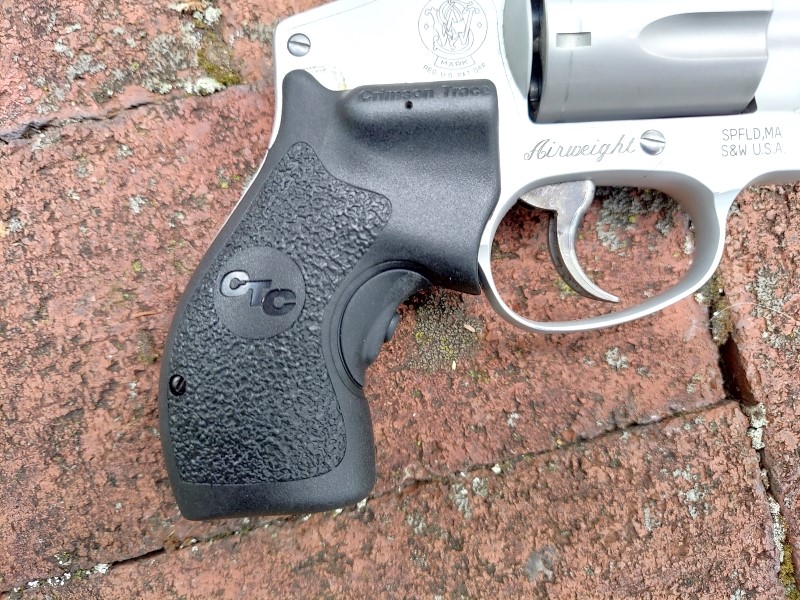
He wanted a wire-free design capable of precision adjustments, reduced bulk, and holster compatibility. The first Crimson Trace lasers were installed on your trigger guard, and you had to send your Glock to Crimson Trace and pay $595 in 1994 dollars. In 1995, they introduced the first laser grips, and they’ve been a part of handgun history ever since.
Laser sights have gotten smaller and smaller, but they have waned in popularity. The visible laser fad has somewhat died down, but there are still tons of options on the market. They certainly have some downsides, but to me, they excel on small pocket pistols. However, the visible laser fad gave way to the IR laser, which is certainly a growing field.
I doubt we’ll ever see the death of visible laser sights. Much like the Terminator series of movies, they seem to continue to expand for better or worse. What do you think of laser sights? Let us know below.
The post Laser Sights: A History appeared first on The Mag Life.
Read the full article here


